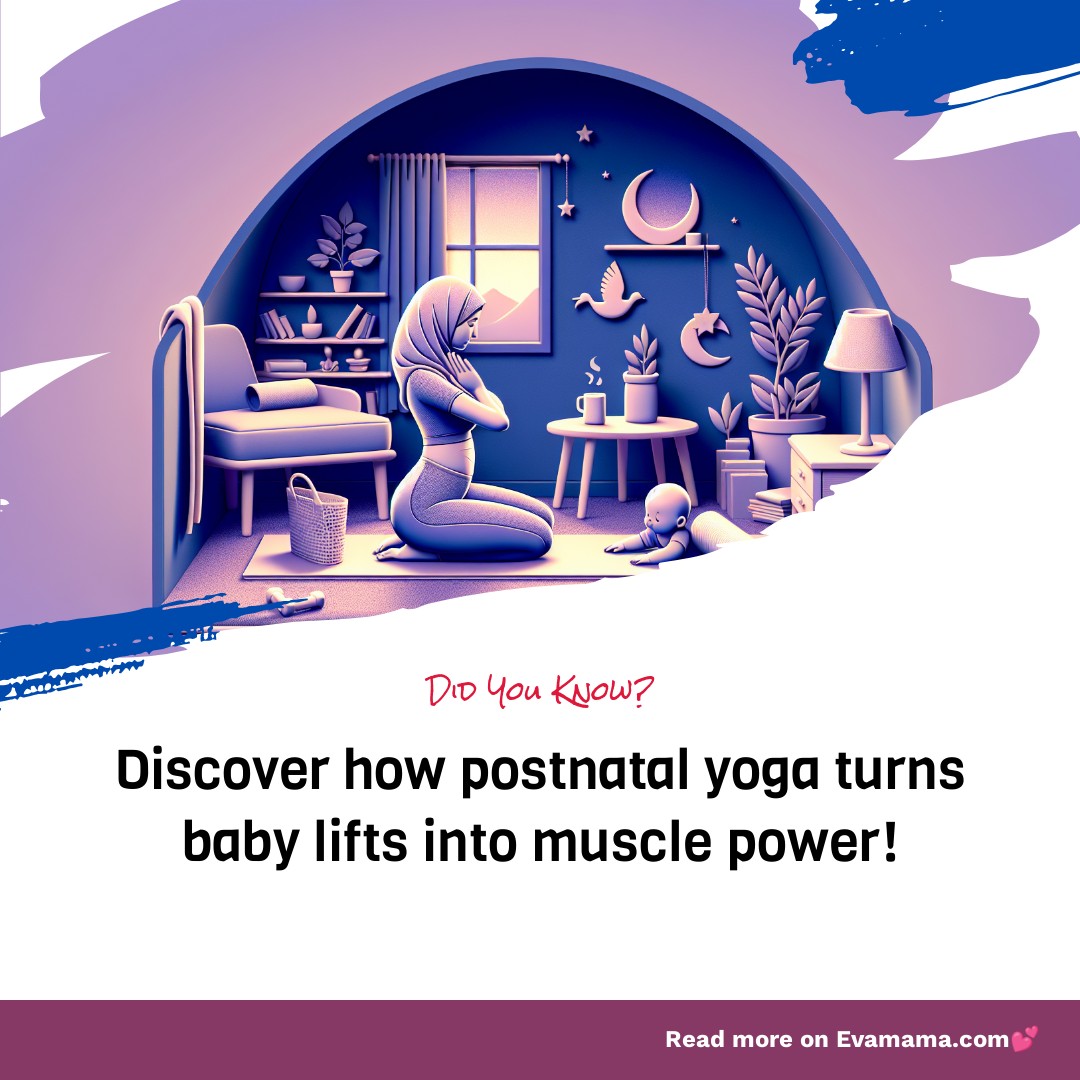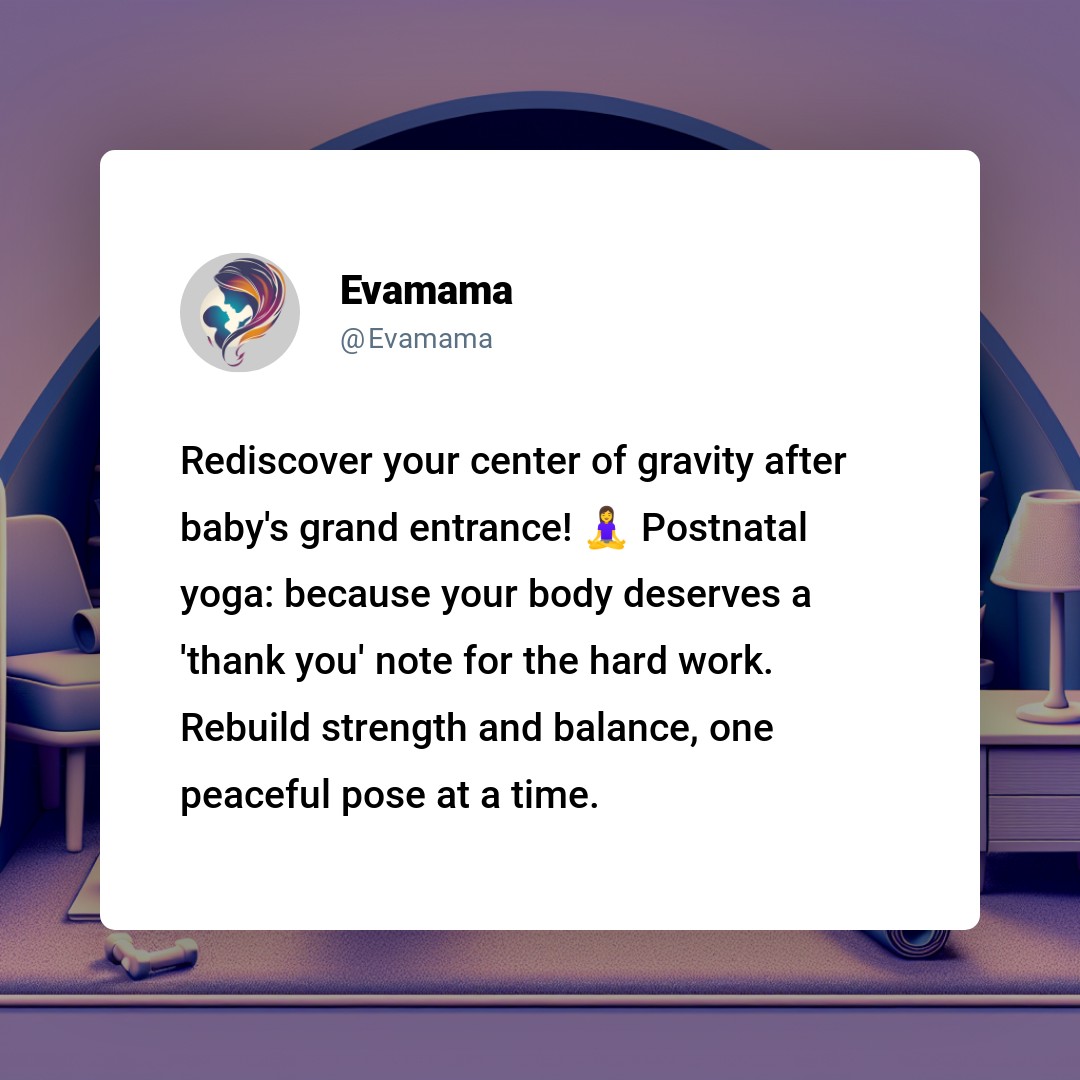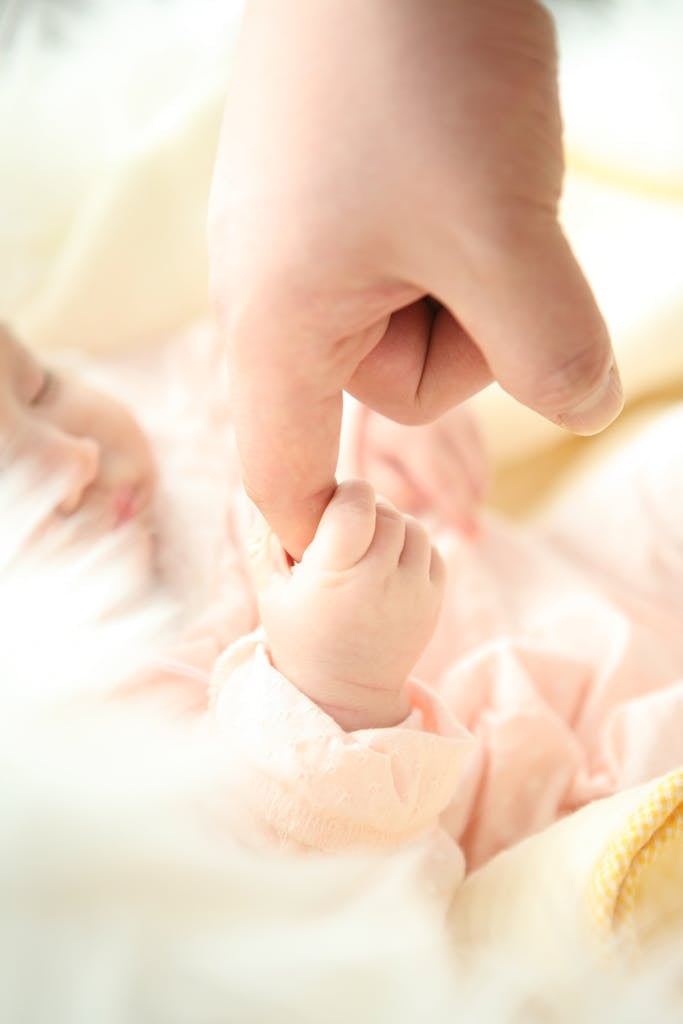Postnatal Yoga Secrets: Rebuild Strength & Balance After Birth
Reclaiming Your Strength: Postnatal Yoga Poses for New Moms
Postnatal yoga is your ally in reclaiming strength and balance after childbirth. Imagine stepping onto a yoga mat, your body a map of the journey it’s just undertaken, and feeling a mix of anticipation and uncertainty. It’s a scene many new moms know all too well, as they seek ways to feel like themselves again amidst the whirlwind of motherhood.
In the dance of postpartum recovery, each gentle stretch and breath is a step toward wellness. Having navigated these waters myself, I’ve felt the tremble of weakened muscles and the triumph of regaining stability.
Let’s embark on a path to revitalization, where each pose is a milestone in your post-birth recovery story. Together, we’ll explore movements that nurture your body, honor your experience, and guide you back to your own strength and equilibrium.

Embarking on the journey of motherhood brings a myriad of changes, not least to your physical strength and stamina. Postnatal yoga is a gentle yet effective way to regain your core strength and As a result body tone after giving birth. Let’s spell out some specific yoga poses that are ideal for postpartum recovery, focusing on how to perform them safely and the benefits they offer.
Gentle Beginnings: The Pelvic Tilt
Reconnect with Your Core
Start with the basics. The pelvic tilt is a subtle yet powerful way to begin re-engaging your abdominal muscles. Lie on your back with your knees bent and feet flat on the floor. Inhale deeply, and as you exhale, gently tilt your pelvis upward, flattening your back against the floor. Hold for a few seconds, then release. This movement not only helps to strengthen your core but also alleviates tension in the lower back.
Building Foundations: Bridge Pose
Heighten Your Posture and Strength
Bridge pose is another excellent way to fortify your core and lower body. Lie on your back, knees bent, feet hip-width apart. Press your feet into the floor as you lift your hips, creating a straight line from your shoulders to your knees. Clasp your hands under your back to open your chest or keep your arms flat for more support.
Restoring Balance: Modified Plank
Core Engagement with Care
A modified plank is a fantastic way to regain strength without overdoing it. Start on all fours, ensuring your wrists are under your shoulders. Step one foot back at a time, coming onto the balls of your feet, and engage your core. Keep your body in a straight line from head to heels, and hold as long as comfortable. This pose strengthens your arms, shoulders, and core, all important areas for new moms.
Aligning the Spine: Cat-Cow Stretch
Flexibility and Flow
The cat-cow stretch is a gentle way to bring flexibility to your spine and engage your core. On all fours, inhale as you drop your belly towards the mat, lifting your head and tailbone up for the cow pose. Exhale, arching your back and drawing your chin to your chest for the cat pose. This fluid movement helps to ease back pain and maintain spinal health.
Empowering the Core: Boat Pose
Challenge with Compassion
When you’re ready for a challenge, try the boat pose. Sit with your knees bent, feet flat on the floor. Lean back slightly and lift your feet, bringing your shins parallel to the floor. Extend your arms alongside your legs. If possible, straighten your legs for a full boat pose. Engage your deep abdominal muscles to maintain balance and build strength.
Nurturing Recovery: Child’s Pose
Rest and Reflect
Child’s pose is a restorative posture that allows you to take a moment to breathe and relax. Kneel on the floor, touch your big toes together, and sit back on your heels. Fold forward, extending your arms in front of you or alongside your body. This pose is a gentle stretch for your back, hips, and shoulders, and it’s a peaceful way to end your practice.
Table of Postnatal Yoga Poses
| Pose | Focus Area | Benefits |
|---|---|---|
| Pelvic Tilt | Core | Engages abdominals, relieves back tension |
| Bridge Pose | Core, Glutes | Strengthens lower body, improves posture |
| Modified Plank | Core, Upper Body | Builds Strength, enhances stability |
| Cat-Cow Stretch | Spine | Increases flexibility, soothes back pain |
| Boat Pose | Core | Challenges and empowers deep core muscles |
| Child’s Pose | Back, Hips | Stretches gently, promotes relaxation |
The key to postnatal yoga is to listen to your body and move within your comfort zone. Each pose should be approached with care, and never push yourself to the point of pain. With time and consistent practice, these poses will help you rebuild your strength, improve your posture, and reduce discomfort as you navigate the beautiful, challenging path of motherhood.
How Does Postnatal Yoga Enhance Balance and Well-being?

Embracing Hormonal Harmony with Postnatal Yoga
After childbirth, your body undergoes a whirlwind of hormonal fluctuations. Postnatal yoga serves as a gentle guide, easing you into a state of equilibrium. The practice includes poses and breathing techniques specifically designed to stabilize hormone levels, which can significantly impact your mood and After all sense of well-being.
Stress Relief on the Mat: A Sanctuary for New Moms
You’re juggling feeding schedules, sleepless nights, and perhaps feelings of anxiety. Postnatal yoga offers a respite, a moment of tranquility amidst the chaos. As you flow through each pose, your body releases tension, and your mind finds clarity. The result? A calmer, more centered you.
Breathing Techniques for a Calm and Connected Motherhood
Breath is life, and in postnatal yoga, it’s also a tool for deep relaxation. Learn to harness the power of your breath to soothe the nervous system. With each inhale and exhale, you’re not just oxygenating your body; you’re teaching yourself how to remain composed in the face of parenting challenges.
Low-Intensity Stretches: Rejuvenating the Postpartum Body
Your body has been through a marathon. Postnatal yoga understands this and introduces low-intensity stretches that help you regain strength without overexertion. These movements promote blood flow, aid in recovery, and help regulate blood pressure, contributing to your physical and emotional balance.
Building a Supportive Community Through Yoga
Postnatal yoga classes are more than just exercise; they’re a gathering of individuals sharing a common journey. Engage with fellow mothers, share experiences, and offer support. This sense of community is invaluable, adopting connections that enhance both your and your baby’s well-being.
Nurturing the Mother-Child Bond with Gentle Movement
Yoga isn’t just for you; it’s a way to deepen the bond with your baby. Certain postnatal yoga practices include your little one, allowing for precious moments of connection. These shared experiences can strengthen the emotional ties between you and your child, enriching the mother-child relationship.
Table: Postnatal Yoga Poses and Their Benefits
| Pose | Benefit |
|---|---|
| Cat-Cow Stretch | Eases back pain, promotes flexibility |
| Child’s Pose | Relaxes the mind, stretches the hips |
| Legs-Up-The-Wall | Reduces swelling in legs, calms the nervous system |
| Pelvic Tilts | Strengthens the pelvic floor, supports abdominal recovery |
Incorporating postnatal yoga into your routine is a step toward reclaiming your body and mind after the transformative experience of childbirth. It’s a practice that honors where you are in your postpartum journey, offering a path to balance and well-being that resonates with the rhythm of new motherhood.







